
Boating the Mangroves (part 2)
April 2nd, 2014
A few more pictures from the boat tour.


This Groove-Billed Ani, believe it or not, was photographed from a brief glimpse in a moving boat. (He looks like he was posing just so, and how I ended up with those background colors in an environment that was mainly mud and mangroves, I have no idea!) Anis, beloved of crossword constructors everywhere (they're usually clued as "black birds"), are a type of cuckoo. They nest communally and are typically seen in groups. No one seems to know why these primarily insectivorous birds have such large and unusual bills.
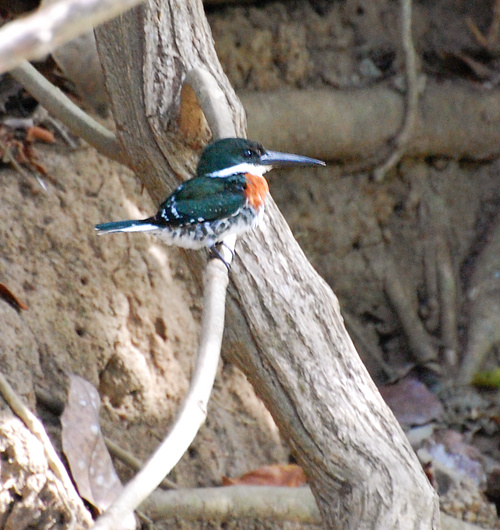
My first Green Kingfisher. A very common inhabitant of the mangrove swamps.
Boating the Mangroves (part 1)
March 31st, 2014
On Monday we went for a boat tour in the mangroves. The star attraction, of course, was the White-Faced Capuchin monkeys. This bold and intelligent species is numerous in Costa Rica and, because of its fearless nature, easily coaxed into close contact with people. A similar tour was the high point of my honeymoon fifteen years ago. I loved watching the monkeys come right into the boat, interact with us and mooch bananas. But I'm a different person now than I was then. This time around, I found I was turned off by the circus-animal approach to things. These creatures have a fascinating world of their own. Their world matters, with or without humans in it.
So I preferred to photograph the monkeys who were at a distance from us, engaging in more natural behaviors. Of course having a telephoto lens makes that a lot easier!
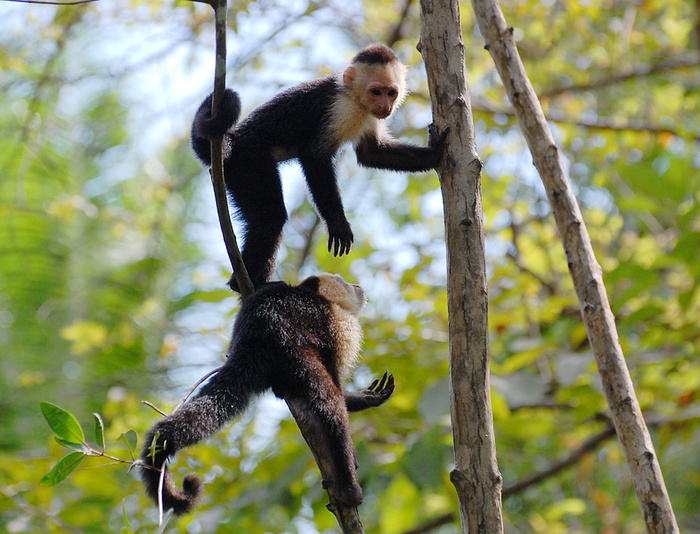
1680x1050 wallpaper
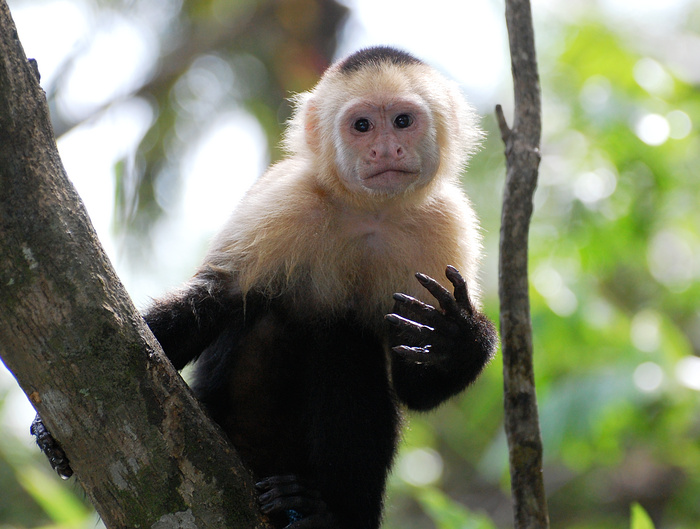
1680x1050 wallpaper
This guy was flycatching. I never knew monkeys did that.
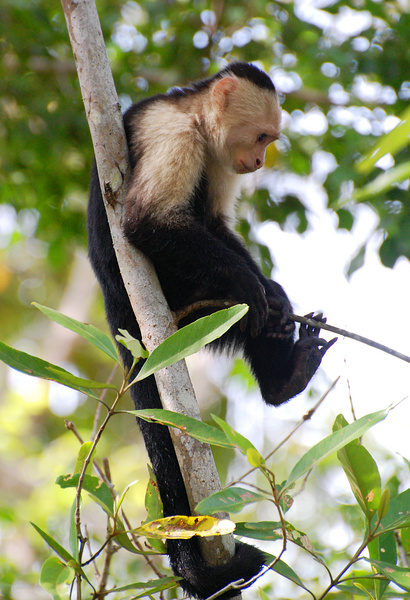
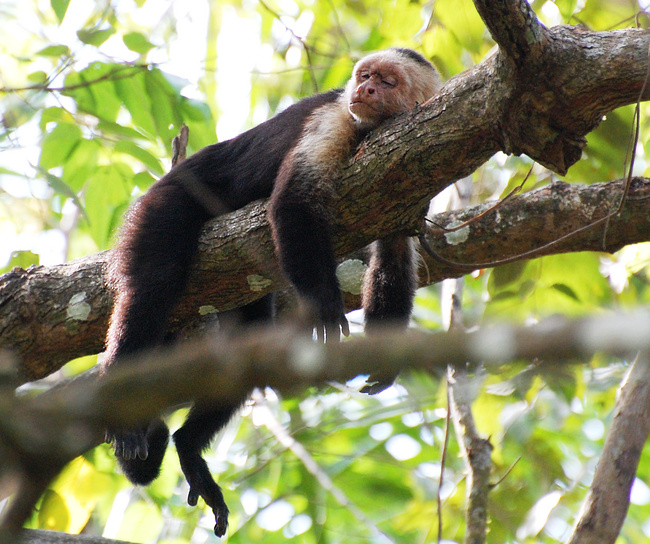
Two Fearless Garden Birds
March 28th, 2014
Wild hummingbirds are a blink-and-you-miss-it kind of thing. Not infrequently I would find one feeding at a flower bush, only to have it warp into another dimension before I could even get my binoculars up. I saw ten different types of hummingbirds on this vacation but most of them were sadly unphotographable.
The Rufous-Tailed Hummingbirds in the garden, though, were bold and numerous. This one flew to a tree with mimosa-like pink flowers in the front yard one afternoon, and proceeded to feed at every single flower it could find. It stopped at one particularly nectar-laden flower long enough for one good shot.
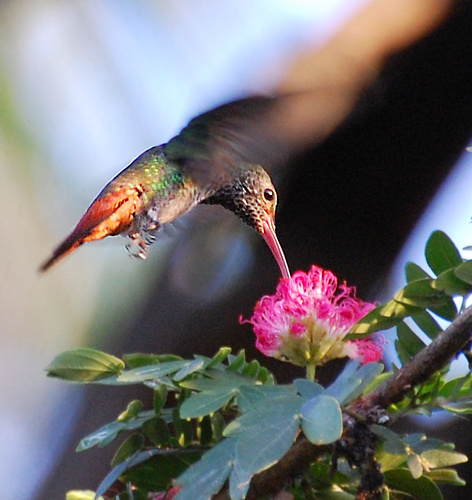
1680x1050 wallpaper
You usually think of wrens as shy birds, but the Rufous-Naped Wrens at Pueblo Real almost out-bolded the grackles. A pair nested in the fruit tree right in front of our window, and regular came to our balcony to sing. They even looked into our suite curiously. Their song was a mellow, cheery warble, a welcome change from their more strident neighbors.
This is one of the places where our field guide (Garrigues & Dean, which I strongly recommend) was out of date. It shows RNWs as occurring no further south than Carara. Quepos is now very much in their range.
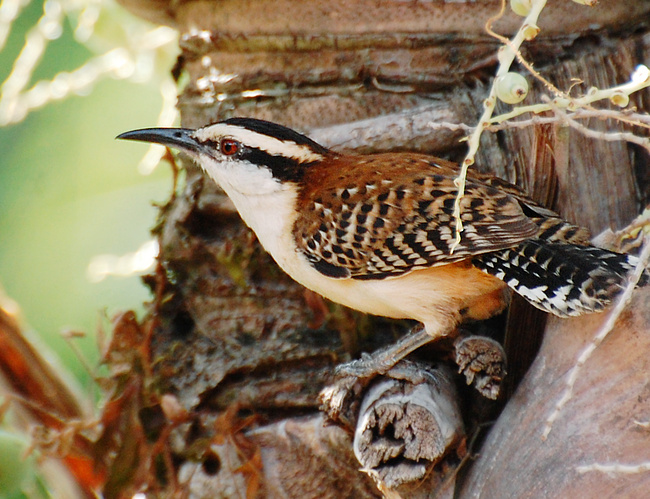
At our balcony planter:
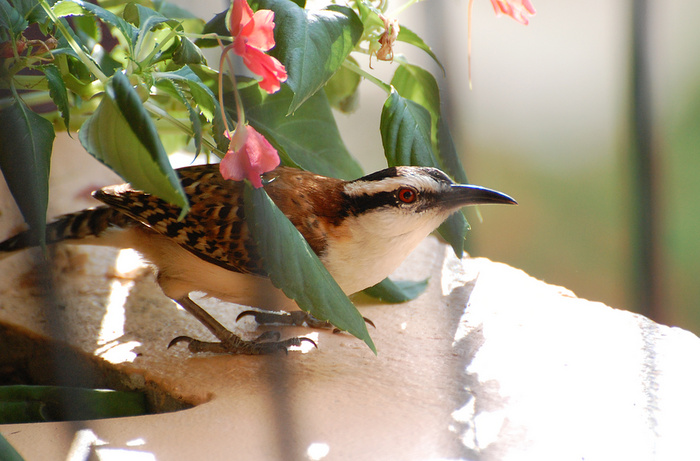
Billing And Cooing
March 25th, 2014
There are many types of doves and pigeons in Costa Rica, but the sweet, tame Inca Doves were my favorite. These little doves range from Central America into the American southwest. They look plain usually, but reveal striking rufous wing patches in flight. This one's rufous is showing a bit after preening itself.
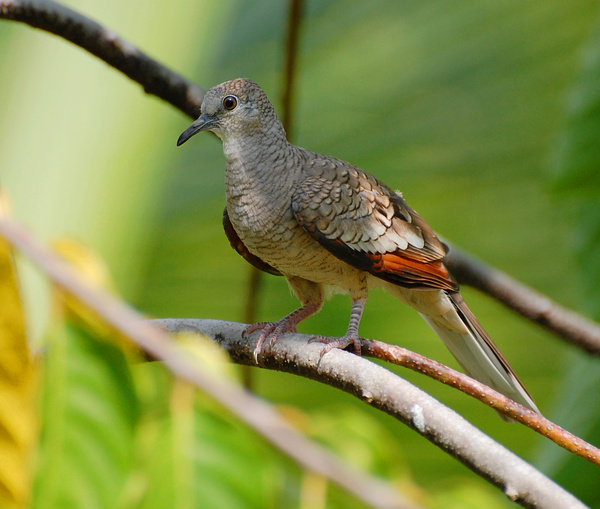
1680x1050 wallpaper
One pair was so trusting, they started to bill and coo right in front of me. The shade of a palm tree provided the perfect lighting.
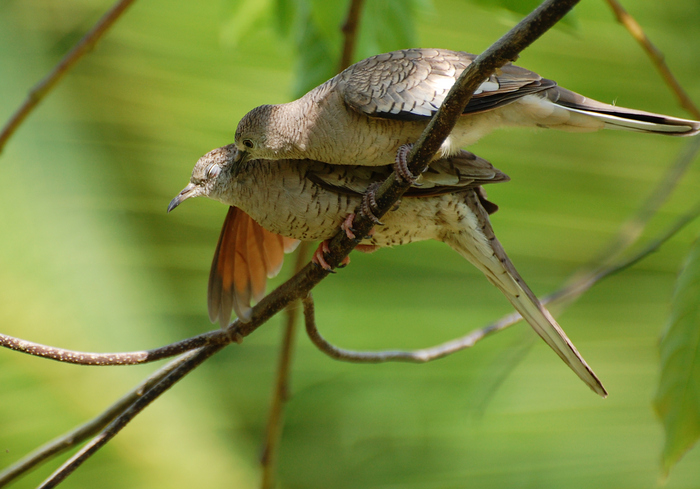
1680x1050 wallpaper
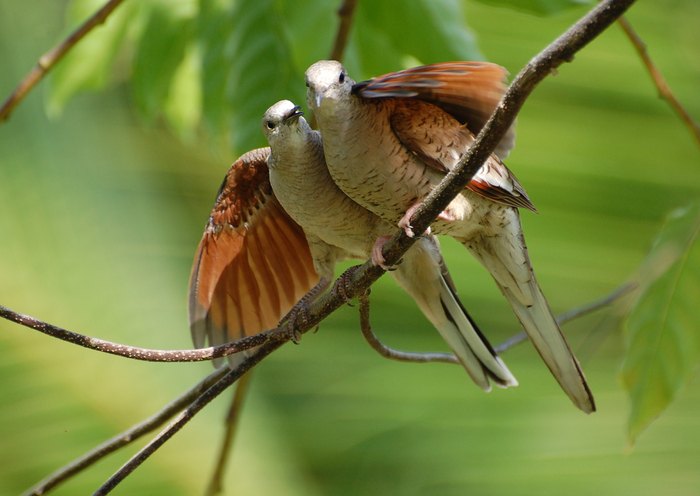
1680x1050 wallpaper
"Yes, we're ready for our couples shot now."
A Beautiful Flycatcher
March 23rd, 2014
If Great-Tailed Grackles produced, say, 70% of the noise in the resort garden, then Great Kiskadees heartily took care of the rest. Kiskadees are a member of the tyrant flycatchers, the most diverse family of birds on earth (though all of them limited to the New World.) Most tyrant flycatchers are in the tropics; Costa Rica alone boasts over 70 of them! And most of them are small, drab LBJ's (little brown jobbies) that are often a challenge to tell apart. But Great Kiskadees are big, bold and beautiful. And though they do have a few lookalikes, they are easily distinguished by their human-friendly habits (one at the resort had a favorite blue car he liked to perch on), and their raucous calls of "kis-kadee! kis-kadee!" all day long.
I could never get exasperated with the kiskadees, as I did with the grackles. They were just too pretty.

1680x1050 wallpaper
Like many others, they were working on their nests. One pair seemed to get in a fight with a pair of Rufous-Naped Wrens for a spot right in front of our window. (Near as we could tell, the wrens won.)
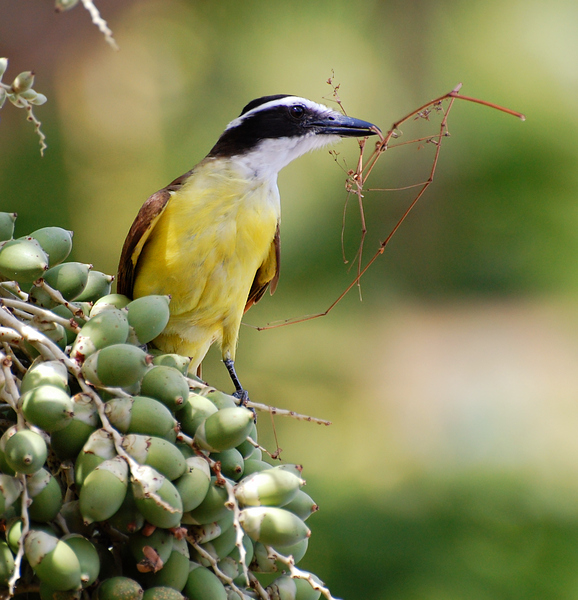

Like They Own The Place
March 21st, 2014
I have a soft spot for grackles. Common Grackles, that is: the typical North American variety. I love their iridescent bronze and blue and purple highlights. To attract a mate, a male puffs out his plumage to catch the light and utter a little call that sounds for all the world like a rusty hinge. I like the sound: it's a harbinger of spring, and, well, it's cute. I like Boat-Tailed Grackles too, the king-size coastal variety of grackles I meet when I visit the Outer Banks with my parents. I often see them wading in the surf, pulling mole crabs up out of the sand.
But Great-Tailed Grackles...well, they're handsome too, but they're also kind of obnoxious!
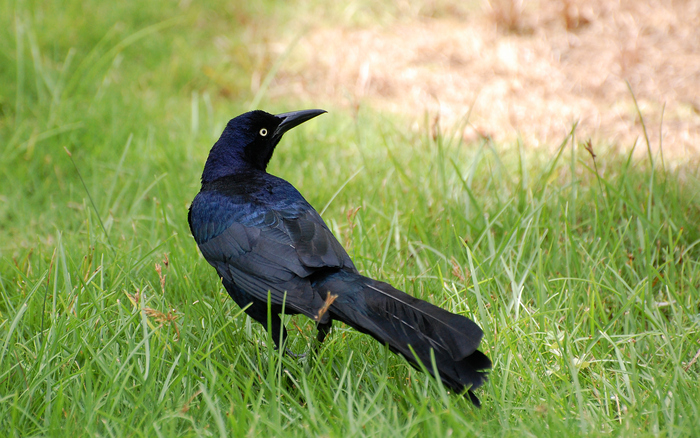
1680x1050 wallpaper
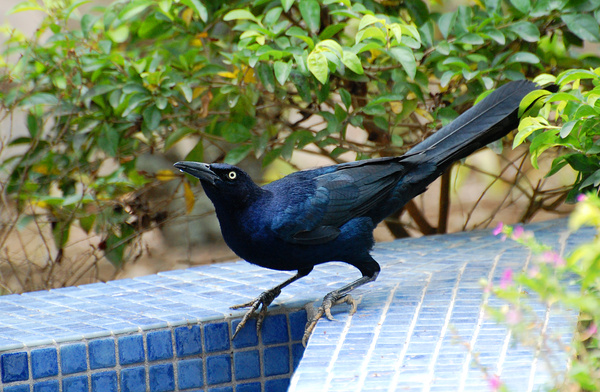
I will swear before God and man that no creature on earth makes as much noise as a Great-Tailed Grackle. I'd bet when a non-birder arrives at Pueblo Real and hears the overwhelming din, they assume the trees must be dripping with a variety of exotic tropical birds making all those loud, weird and different sounds. No, it's mainly grackles. (Well, that and the kiskadees, which I'll get to next!) They have a zillion different calls and none of them are melodious. You can't even get them to shut up at night. There was a big shade tree down the road that they liked to roost in. All you had to do was walk by, even hours past dusk, and they would awake with a cacophony of car alarm, blaring fire engine, honking horn sound effects. My theory is that Great-Taileds listen to the variety of noises produced by human society (with which they are usually in close association), and pick the loudest and most annoying of them to incorporate into their repertoire.
Don't take my word for it, listen for yourself. Like that, only a lot more so. I imagine it had something to do with the beginning of breeding season. (For many Costa Rican resident birds, that's right about now. That way it will be the rainy season by the time they have young in the nest, and the rain will bring plenty of insects to feed their brood.) All around the garden, they and others were gathering nest material, defending territories and flirting with the ladies. The grackle approach to courtship involved mainly strutting, chasing females around, and posturing before them with feathers puffed out and trembling. And making noise. Down the road, I even ran into a sort of grackle lek, with a group of males gathered together in a clearing posturing at each other.
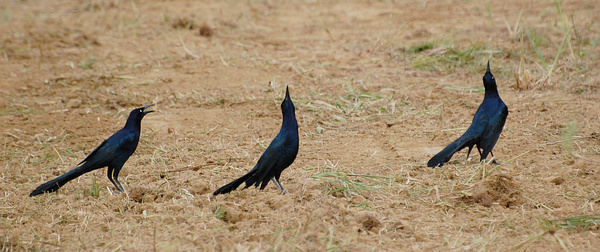
The Great-Tailed Grackles basically had the run of the resort. The indoors may have been ours, but the grounds were theirs; we were just visitors whom they graciously tolerated. They loved to bathe in the big fountain out front. But if that was occupied, the swimming pool would do! I watched as one hopped up on the poolside bar, then carefully hopped down onto one of the stools in the water.
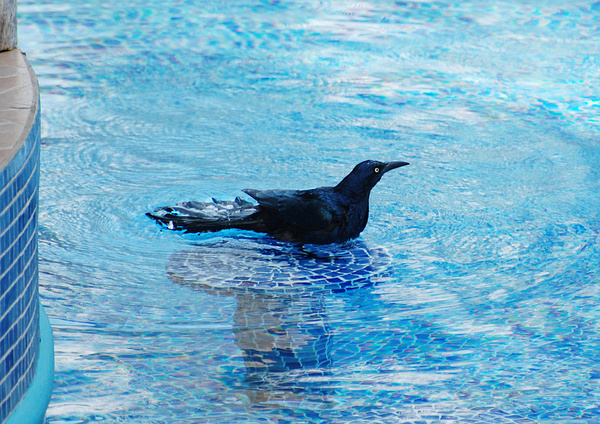
Female Great-Taileds are a good deal smaller and browner than the males, but otherwise just as grackly.
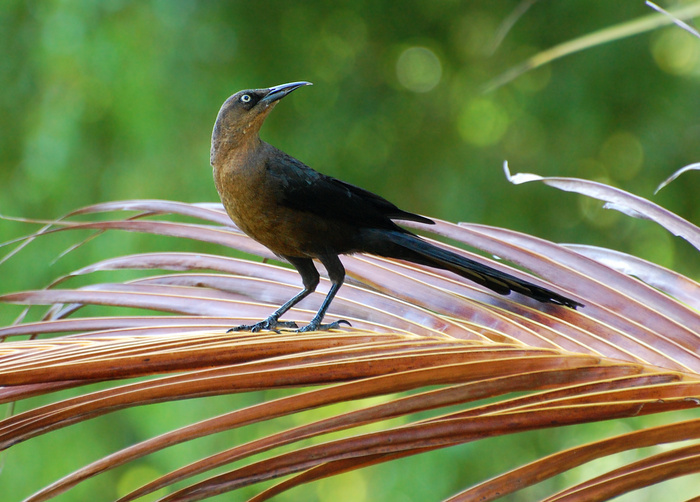
Costa Rica in pictures: part 1 of [??]
March 19th, 2014
I'm back from vacation in Costa Rica.

And it was spectacular. It was like a two-week-long dream (from which I awoke to the cold, hard, but mainly just cold reality of Canadian winter.) The weather, the food, the scenery, the people. And the birds, oh, the birds.
Out of the hundreds of species of Costa Rican birds, I went in with a targeted wishlist of about fifty of them. I found roughly half of those--not bad for a two-week stay, and furthermore, a two-week stay without a car, which meant I was limited to the area around the resort (Pueblo Real) for much of the time. My full triplist stands tentatively at 166, of which 132 were lifers, ballooning my lifelist to a sum of 462. Many of them are owed to Johan Chaves, a guide with whom we booked two full-day birding tours, and about whom I cannot say enough good things. Dedicated, tireless, enthusiastic, warm, funny, and extremely skilled at both spotting and identifying birds. He treated my wishlist as a sort of treasure hunt, and went out of his way to tick off as many entries on it as he could.
The beauty at the top of this post, though--a Blue-Crowned Motmot--I got on my own, during a trip to Manuel Antonio park with my husband. We had been warned that MA was not so good for birds (monkeys and sloths, yes, birds, no.) And it mostly wasn't. The large, noisy crowds of tourists scared them away. But it just goes to show every rule has an exception, and the motmot was worth the price of admission alone.
It's not easy photographing or even seeing birds in a tropical forest. There's an awful lot of thick foliage and an awful lot of vertical space for them to occupy. Seldom are they motivated to come down and perch in front of you. The motmot started out pretty close. Then, while Mike was standing watching him and I was frantically pulling my camera out of my pack and screwing the lens hood on, this gorgeous bird flew towards us and perched low right beside the trail.
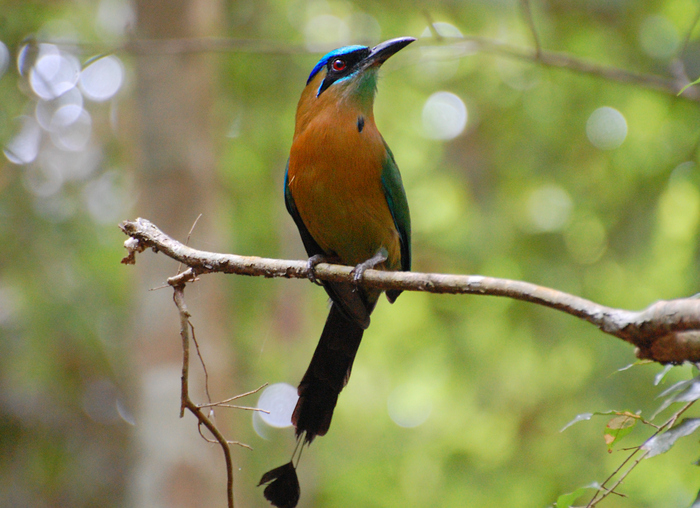
1680x1050 wallpaper
Sunset Snowy
February 22nd, 2014
I joined an OFNC outing to the Gatineau region today, looking for owls and raptors. It was mostly a bust--unsurprising really, given that February is always the cruelest month for birders and this winter has been poor in general. However, we did see plenty of this winter's celebrity, the Snowy Owls. No good, artistic close-up pics, but I thought this one cut a fine figure against the sunset.

A few more individuals. The first is an adult; the heavy black barring on the second marks it as a juvenile, born last spring, which is what we typically see here. The mature adults usually stay in the north.
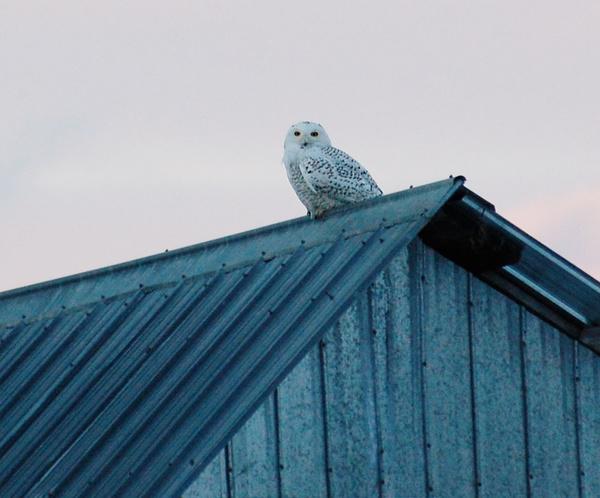
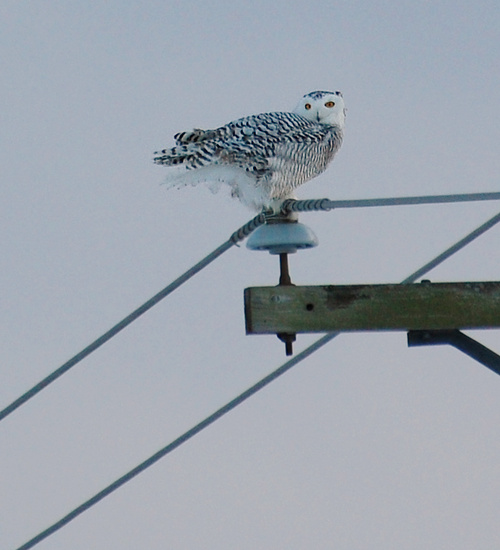
Autumn Leftovers
January 20th, 2014
It's gotten to that part of winter where I'm just tired of it. Tired of the cold, the snow, the fogged-up lenses, and the, shall we say, glacial pace of my winterlisting. So since I don't have many new pictures or stories of late, I'll fill in the gap with some leftover photos that I didn't get around to posting before.
In other news, husband and I are doing a fifteenth-anniversary vacation to Costa Rica this coming March! I'm beyond thrilled, since this will be the first chance I've ever had to bird the tropics, or indeed, anywhere outside of North America. You can expect a flurry of posts on here somewhere around late March when we get back.
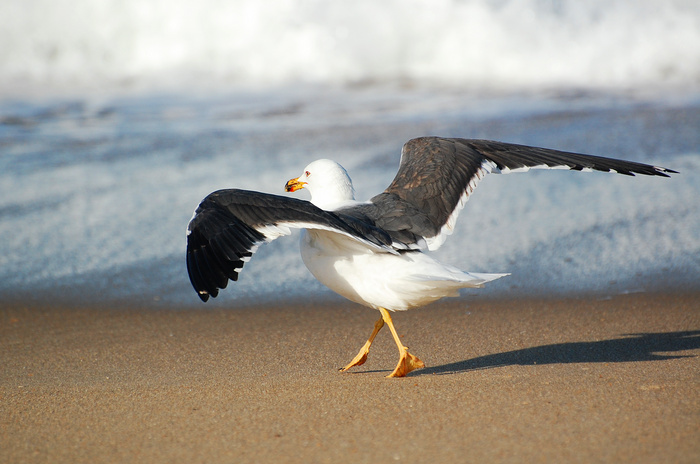
1680x1050 wallpaper
A spring leftover, actually. Lesser Black-Backed Gull photographed at Cape Hatteras.
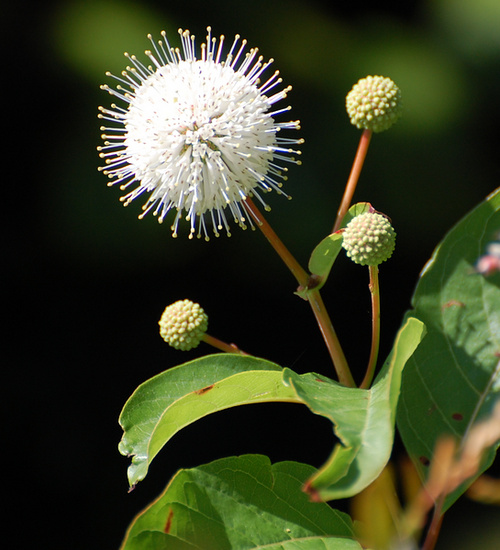
A weird wildflower called buttonbush. I found it in the Carp Ridge area.
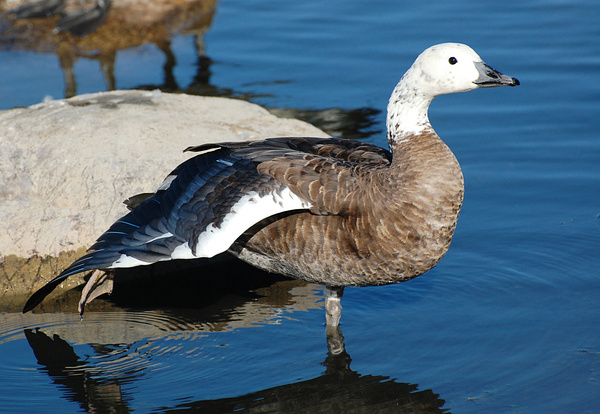
This odd goose caused a lot of discussion when he showed up at Andrew Haydon Park. Some theorized that he was some sort of domestic hybrid, others that he was just a leucistic (partial albino) Canada Goose. The final verdict was that he was probably a hybrid of a Canada Goose and a Snow Goose.
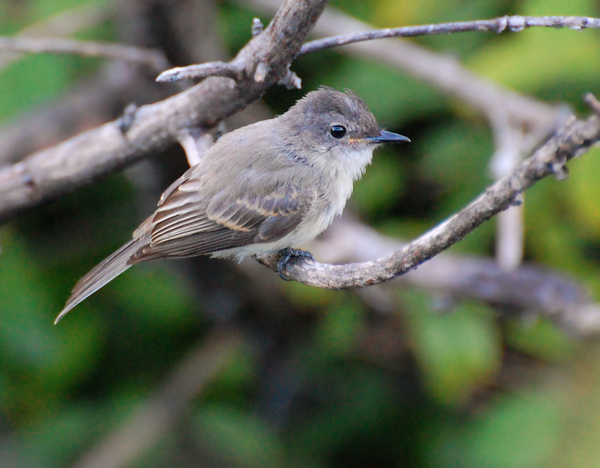
A very young (judging by the beak) Eastern Phoebe at Mud Lake. Phoebes are flycatchers that are quite adapted to human settlement and often nest on or near our buildings. They're named after their call.
On a...you know
January 6th, 2014
When I read on Gillian's blog of a tame flock of Horned Larks off Old Richmond Road, I rushed out to look for them the next day, -22C weather be damned. Larks are uncommon in our area and usually quite skittish. I've visited their small breeding population in Richmond in spring, and listened to their strange, tinkling flight songs as they spiralled up, then dove back into the field. They always kept their distance from me.
This group was, indeed, delightfully tame, seemingly unwilling to go far from the exposed grain that they were feasting on (which happened to be right next to the road.) To a ground-feeding bird in a landscape buried in snow, such a thing must be a gold mine. As I approached the flock resting on a snowy hummock, they flushed one by one--but only to go eat. I decided not to push it after that. It seemed unkind to persistently stalk birds that were already coping with so many extremes.
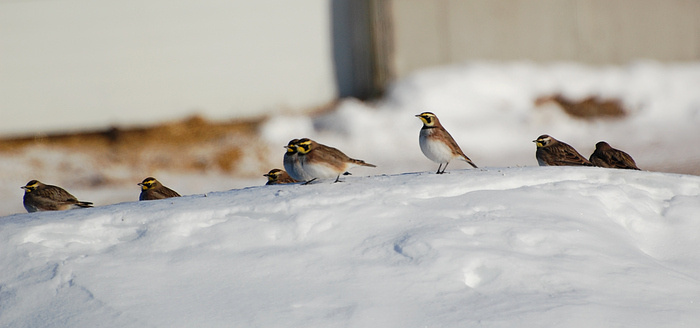
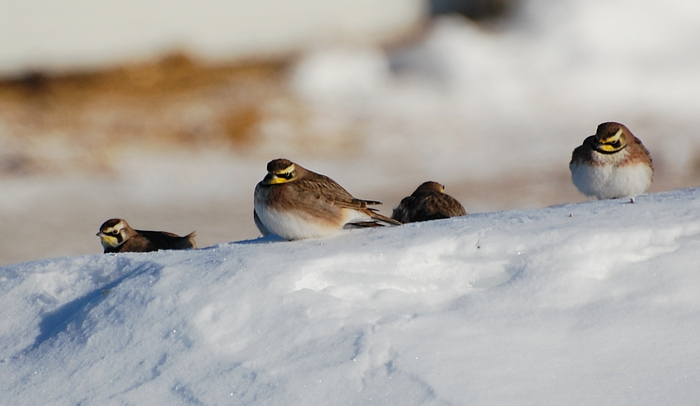

|
